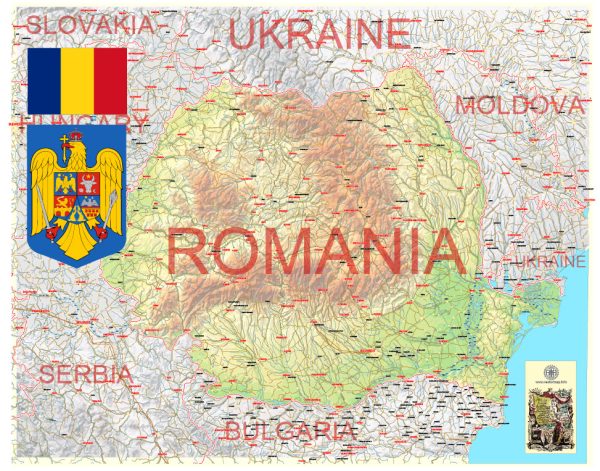Romania’s geology is diverse and fascinating, with a wide range of geological features and formations. The country is situated in southeastern Europe and is known for its varied landscapes, which are a result of complex geological processes that have occurred over millions of years. Here is a general description of Romania’s geology:
- Carpathian Mountains: The Carpathian Mountains dominate the central and northern parts of Romania. These mountains are a part of the Alpine orogenic belt and extend over 900 kilometers from the Czech Republic to Romania. They are geologically young, having formed during the Tertiary period due to the collision of the European and African tectonic plates. The Carpathians are characterized by rugged topography, deep valleys, and diverse rock types, including sedimentary, metamorphic, and igneous rocks.
- Transylvanian Basin: To the west of the Carpathians lies the Transylvanian Basin, a large depression filled with sedimentary rocks. This region is home to fertile farmland and is the heart of Romania’s agricultural production.
- Moldavian Plateau and Muntenia: To the east of the Carpathians, there is a lower-lying plateau called the Moldavian Plateau, and to the south, you’ll find the Muntenia region. These areas are characterized by rolling hills and plains with sedimentary rocks.
- The Danube Delta: Romania is home to a portion of the Danube River, which forms the Danube Delta, one of the most biodiverse and dynamic ecosystems in Europe. The delta is constantly changing due to sediment deposition and erosion and is a UNESCO World Heritage site.
- Geological Hazards: Romania is prone to various geological hazards, including earthquakes and landslides. The country is located in a seismically active region, and several notable earthquakes have occurred in its history.
- Mineral Resources: Romania has a rich geological heritage with valuable mineral resources. These resources include salt, coal, oil, natural gas, and various metals like gold, silver, and copper. The mining industry has historically played a significant role in the country’s economy.
- Caves: Romania is known for its numerous caves and karst formations, such as the Scarisoara Ice Cave and the Pestera Valea Cetatii Cave. These caves are formed in limestone and are renowned for their unique geological and environmental characteristics.
- Geological History: The geological history of Romania dates back hundreds of millions of years. It has been shaped by the movement of tectonic plates, volcanic activity, and multiple ice ages, leaving behind a diverse range of rock types and geological formations.
Romania’s geology is not only of scientific interest but also has economic and ecological significance. The diverse landscapes, mineral resources, and geological features make the country a unique and valuable region for geologists and researchers.


 Author: Kirill Shrayber, Ph.D.
Author: Kirill Shrayber, Ph.D.